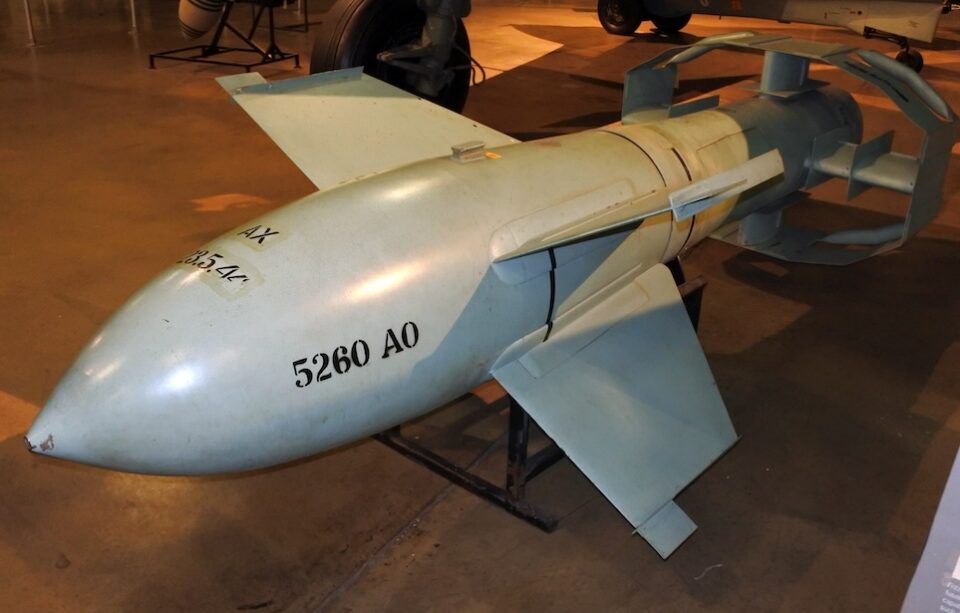The Fritz X, also known as the Ruhrstahl SD 1400 X or Kramer X-1, was an advanced German weapon developed during World War II to target and destroy heavily armored ships. Designed to penetrate thick armor, it featured several design enhancements aimed at improving its accuracy in combat.
Despite its powerful capabilities, the Fritz X had significant drawbacks. It was bulky, slow-moving, and easily visible to Allied aircraft, making it vulnerable to being intercepted and shot down before reaching its target.
Modified PC 1400
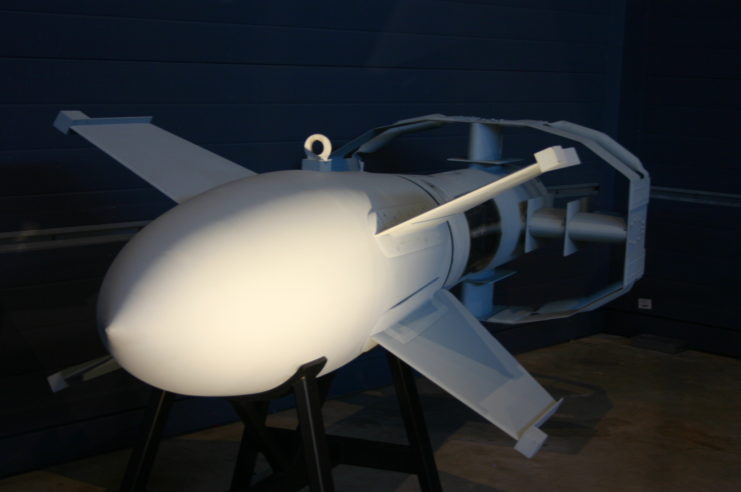
Conceived by Max Kramer and manufactured by Ruhrstahl AG, the Fritz X came from the PC 1400 (1,400 kg) bomb. Weighing 3,450 pounds, it had a formidable 710-pound warhead that was capable of penetrating up to 28 inches of armor when deployed between 18,000 and 20,000 feet.
In 1940, various iterations were made to ascertain the optimal design. The X-2, engineered for higher speeds and equipped with an infrared homing device, saw its development halted, with only a single unit produced. Conversely, the X-3, which was larger and heavier in comparison, boasted impressive speeds of up to 900 MPH. Nonetheless, the X-1 emerged as the preferred choice, due to its streamlined operation and developmental simplicity.
By 1941, the Luftwaffe began rigorous testing of the missile. Two years later, the project advanced to the manufacturing phase.
Fritz X specs
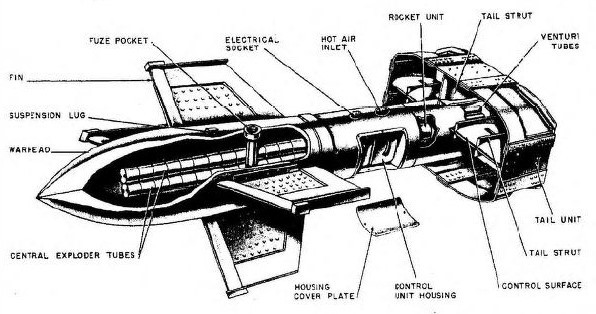
The Fritz X was a cutting-edge weapon for its time, featuring an aerodynamic design and guided by a unique radio-control system known as the Kehl-Strasbourg joystick. Its tail had a distinctive twelve-sided shape with four fins—two of which were extended and fitted with spoilers to aid in steering. The missile’s stability was maintained by two gyroscopes, while its front featured cross-shaped wings, each slightly uneven in size.
These missiles were launched from aircraft like the Dornier Do 217K-2 and the Heinkel He 177A Greif.. Bombardiers tracked the missile’s descent by monitoring flares attached to its tail. The Fritz X could adjust its course mid-flight using its radio-controlled spoilers, though its effectiveness was contingent on whether Allied forces could successfully jam its radio signal.
Success in the Mediterranean Theater
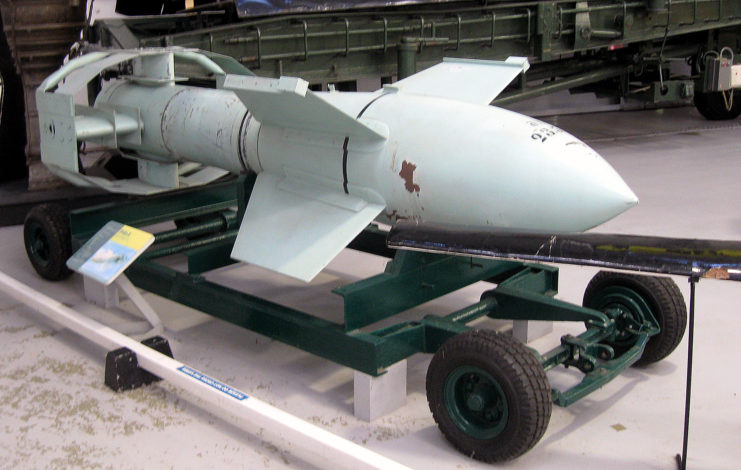
The Fritz X made its debut in combat on July 21, 1943, during a raid on the Port of Augusta in Sicily. At that time, no confirmed hits were reported, and the Allies remained largely unaware of the Germans’ use of radio-guided missiles. However, the Fritz X achieved its most notable success in a subsequent attack on the Italian fleet in September 1943.
Following the arrest of Benito Mussolini, the Italian government entered into negotiations with the Allies. On September 8, the Supreme Allied Command in Europe announced the signing of an armistice. A plan was devised to transfer the Italian naval fleet to Allied ports in Tunisia and Malta. However, the Germans quickly caught wind of the plan and devised their own strategy to intercept the convoy, aiming to prevent the ships from reaching their intended destinations.
Sinking of Roma (1940)
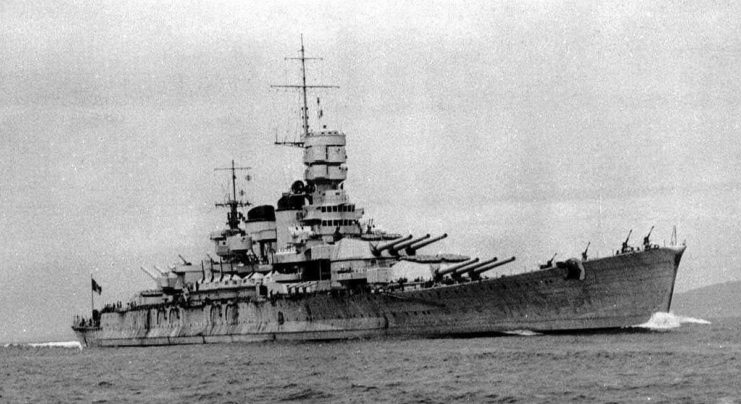
A squadron made up of three battleships—Roma (1940), Vittorio Veneto, and Italia (1943)—along with six cruisers and eight destroyers, sailed along the western coast of Corsica, heading toward Sardinia and Tunisia. Around noon, six German Do 217K-2 bombers from Gruppe III of Kampfgeschwader 100 Wiking approached the formation, each carrying a Fritz X guided bomb.
The most significant event during the attack was the sinking of the Italian flagship Roma. One of the Fritz X bombs hit the battleship on her starboard side, detonating underneath her keel. The blast caused devastating damage, flooding the engine and boiler rooms and knocking out two of her four propeller shafts. The resulting loss of speed, combined with spreading electrical fires, quickly turned the situation critical.
Fritz X missiles sink the HMS Spartan (95) and others
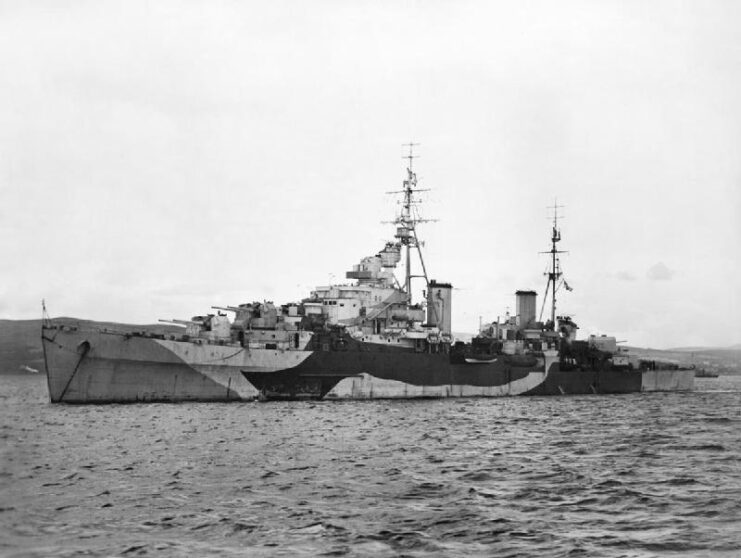
Just seven minutes later, another Fritz X hit the Roma, this time detonating in her forward engine room and causing a catastrophic magazine explosion. The force of the blast killed Vice Adm. Carlo Bergamini, the ship’s captain, and 1,393 crew members. Within 30 minutes of the first hit, Roma split in two and capsized.
In the days that followed, Luftwaffe pilots continued to deploy Fritz X missiles, sinking the British cruiser HMS Spartan (95) and destroyer Janus (F53), as well as several merchant ships in the area. They also inflicted severe damage on the British warship HMS Warspite (03) and cruiser Uganda (66), along with the American light cruisers USS Philadelphia (CL-41) and Savannah (CL-42).
The Fritz X made German aircraft vulnerable
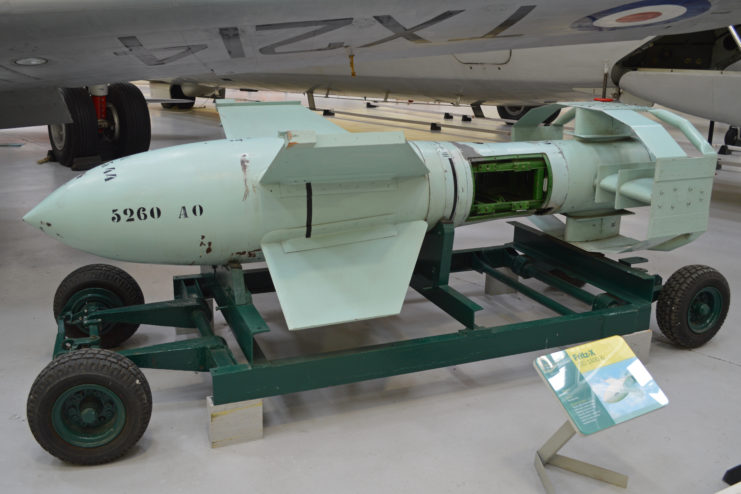
Although the Fritz X showed early promise, its weaknesses soon became apparent. To use the missile, German bombers had to fly in a straight and level path, making them easy targets. After releasing the Fritz X, the bomber had to slow down and rely on visual tracking to guide the weapon to its target.
This made aircraft carrying the Fritz X highly vulnerable, and the Allies were quick to take advantage. Allied fighter planes became the most effective defense, as they could disrupt the bombers’ flight path and prevent accurate targeting. Smoke screens also proved useful, as they made it harder for the bombardiers to see and guide the missile.
In addition, the Allies began using electronic countermeasures to jam the Fritz X’s radio signals, making it even harder for German forces to use the weapon effectively.
Fritz X failed to meet the Luftwaffe‘s expectations
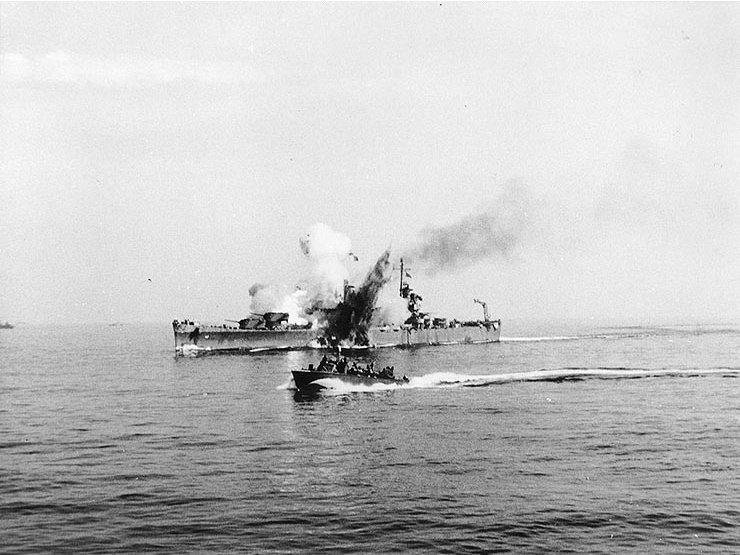
More from us: The German V-1 ‘Buzz Bomb’ Was Developed to Terrorize the British Public
Originally, the plan aimed to manufacture 750 Fritz X missiles monthly. However, from April 1943 until the program’s conclusion in December of the following year, only 1,386 were produced, with 602 allocated for training and testing purposes. Moreover, the missiles failed to meet the Luftwaffe‘s expectations for accuracy, striking their targets merely around 20 percent of the time.
Despite its shortcomings, the Fritz X served as a precursor to the development of future spoiler-controlled missiles.
